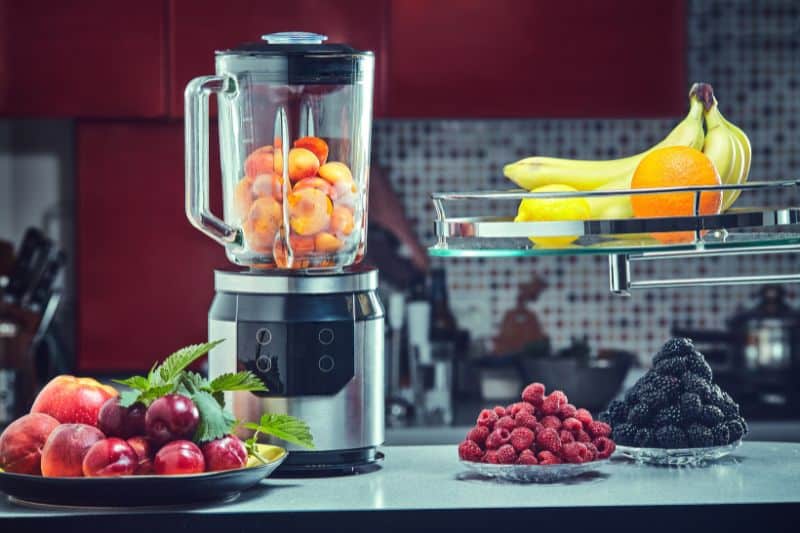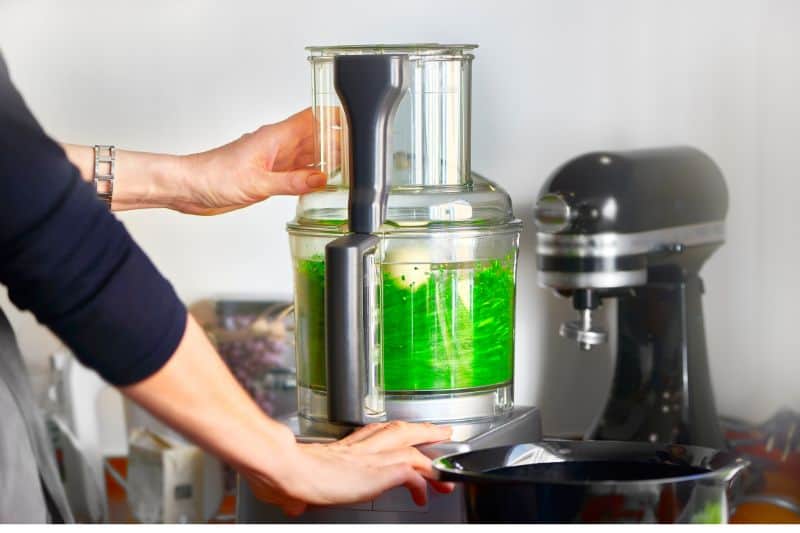Blenders are technology’s gift to the domestic sector. They’re versatile appliances that we can use to create an array of meals, smoothies, and other edible items. They’re indispensable kitchen additions that every home remains incomplete without.
These magical workhorses are made from different materials — we have steel, plastic, metals, and glass. And usually, these kitchen appliances can last as long as six years, depending on quality and how well you maintain yours.
But what happens when your blender’s lifespan comes to an end or when you think you need to upgrade? What do you do with your old friend — is it possible to recycle a blender? Is it environmentally safe to throw it in the trash?
Well, if you’re curious about these questions and even more, then please read on. Let’s go!
Can You Recycle a Blender?
Yes, you can certainly recycle a blender, and that’s because these appliances are usually made from recyclable materials. Actually, in most cases, blenders are made from metals, and it’s pretty easy to recycle them these days.
You see, blenders have been designed to serve you for a long time. But alas, you’ll eventually have to replace them because of wear and tear or because you desire an upgrade. Technology is moving fast, and each year, newer innovations that also extend to kitchen appliances are emerging.
So, when it’s time to part with your blender, how do you go about it? If you’re environmentally sensitive, it’s expected that you’ll explore environmentally safe ways to dispose of your old items.
And thankfully, that’s a possibility these days! Some areas make provisions for recycling household appliances like blenders, and you could find out if yours is inclusive. Alternatively, you could also inquire at your area’s recycling center if you can bring your old blender.
Another option is to find out if your area’s landfill has recycling options for small appliances. You can also use a recycling depot — these are pretty common for disposing of electrical appliances. Take off the glass or plastic jar and take everything else to the depot.
These are the most suitable options for disposing of it in an environmentally friendly manner.
When you’re disposing of your blender, it’s important to prepare it properly beforehand. First, you have to unplug it and let it cook down for days before. Then, separate the different parts and take them to their respective recycling areas.

Can You Throw Blenders in The Trash?
One of the easy ways to dispose of a blender is by throwing it in the trash. In fact, many people are aware of this, and it isn’t uncommon to find old blenders in the trash. But before you do, try and see if recycling is possible, or you can donate or give it to a friend in need if at all it’s in good working condition.
Also, before you opt to toss it in the trash bin, it’s best to find out if it’s legal for you to throw small appliances in the dumpster. It’ll end up in a landfill where it may be compacted or left to sit around for many years.
Another factor you have to consider when you’re throwing your blender in the trash is where it’ll end up. Blenders are made from a combination of different materials, and most have plastic components in them.
But generally, while throwing your blender in the trash bin is okay, it’s not the best practice, and I’m about to tell you why.
You see, throwing blenders in the trash will result in them ending up in a landfill. This can be a problem for the environment because blenders aren’t biodegradable, which means it’ll be impossible for microbes to act on them and break them down.
So, the best way to dispose of a blender is to recycle it. There are many provisions for this, and you can start with curbside recycling, appliance recycling depots, or even companies that accept small appliances.
You can find them by using a recycling locator — this is an environmentally sensitive disposal method that ensures your blender doesn’t end up taking up space in landfills or, worse, polluting our water bodies.`
Are Blenders Dishwasher Safe?
Blenders can safely go into a dishwasher, but that only applies to some models. Check the manual to see what the manufacturer says about your blender before you put it in the dishwasher. This will help you be aware of any potential problems related to using a dishwasher for your blender and avoid them.
Cooking is fun, but cleaning up right after is the difficult part. After preparing that piña colada, the thought of cleaning the blender can be distressing and may make you wonder if you can put it in the dishwasher.
Well, for some models, the answer to whether they can work with dishwashers is affirmative, meaning you can put them inside without risking their functionality. But for others, dishwashers are a “no-put” zone.
But then, even for the models that can safely work with dishwashers, be careful to see what the manufacturer says. Check the directions provided because, in most cases, you will need to remove some parts before putting the rest into the washing appliance.
For instance, any part contacting the blender’s wiring should not touch the water.
So, it’s safe to say that only the blender’s jug can go in a dishwasher. Even then, you have to ensure that the blender base never touches water. It could spoil it or, even worse, result in an electric shock.
We have a cheat sheet for cleaning your blender that’ll certainly make this chore a walk in the park. It’s just as simple as pouring some water into the jug, adding dish soap, and turning on the machine.
It’ll spin the soap and water around and clean out every corner, and this may even be more effective than using a dishwasher or cleaning your blender manually. Then, you can rinse out the soap with some hot water and flip it over to dry properly.

Can Blenders Be Used as Food Processors?
You can use a blender to do some of the things a food processor helps out with. A blender can also mix and turn your fruits and vegetables into purées, mince meat, and grind foods into smaller pieces.
You see, these days, there’s almost always an appliance for every chore. So, of course, that extends to cooking and cleaning.
For instance, a food processor can help with a range of cooking chores like slicing, dicing, blending, mixing, shredding, and chopping, to name a few. Thus, it can singlehandedly cater to many aspects of cooking a meal, making it a handy device.
However, in case your food processor stops working, you can always turn to your blender to help with the same job.
The best part is most blenders come with different jars — you can use some to blend dry ingredients, and some are for wet ones. In addition, a jar for wet foods can also blend dry ones. But, of course, you’ll have to reduce the amount of water you add or add nothing at all.
Again, it’s worth noting that although blenders can do the work of a processor, it’s not their primary job, so don’t expect them to work just as well as their counterparts specifically tailored for the job.
Generally, food processors can handle more technical food preparation chores than blenders. For one, your blender cannot knead the dough, while a food processor can. So, while a blender can come in handy as a quick substitute for a food processor, it’s limited in some aspects.
6 Ways to Dispose of a Broken Blender
While our blenders are built to last a very long time, inevitably, they’ll eventually stop working. On the other hand, you may also desire an upgrade, and you’ll still have to dispose of the previous one to make room for the new one.
So, how can you safely dispose of it? Well, we’ll show you several creative ways to do so in an environmentally friendly way. Enjoy!
1. Donate it
One of the most suitable ways to dispose of a blender is to donate it. There’s always someone ready to take old appliances, and if yours isn’t damaged beyond repair, then it’s a good idea to seek out people like these and give them to them. However, you have to clean it properly before you donate it.

2. Planter
Do you fancy yourself a green thumb? Then, you likely know that no material goes to waste for gardeners. For example, your blender jug can serve as a planter for young plants. Later on, you can choose to transplant them or even leave them in the jar if they won’t grow beyond their size.
What’s more, a blender is presentable enough for you to leave in your living room or kitchen. That way, you can personally nurture the plant in the jar. Then, you can place it by a window where it’ll receive enough sunlight and oxygen.
3. Ladle
Your blender jug can also serve as a ladle. Some blenders have measurement marks on them, and you can use this to your advanced. You can use it to scoop dog food or any other dry food. Alternatively, you can also use it to measure cooking ingredients and foodstuff.
4. Aquarium
Did you know that you can easily transform your old blender jug into an aquarium? That’s true, and the best part is that blenders have covers, so even if you get a jumper fish, you don’t have to worry about it jumping out of the jar.
Now, here’s how to get started. First, you’ll need to prepare the aquarium. Then, you can get some seaweed, pebbles, and suitable water for the type of fish you want. Then, put those things together, and you’ll have an aquarium.
However, blender jars may not provide enough of an area for your tiny finned creatures to explore. The size also limits you to only keeping one or, at most, two pint-sized fish.
5. Flower Vase
Here’s another hack for repurposing your blender jar. It’s large enough to serve as a flower vase and also presentable enough to sit in the middle of your dining table, your coffee table, or even on your nightstand.
You can either plant your favorite flowers in it or stick a bouquet you recently bought or received in the jar. If it’s a single flower, like a rose, you can make it stay in place by sticking it through the slit in blender jars.
6. Storage Unit
Now, this is one of the more common uses for old blenders. It can serve as a storage unit for an array of things. First, you can place small items that are always impossible to find when we need them the most. Some of them include buttons, tape measures, office pins, etc.
Alternatively, you can also use them to store brooches, bracelets, scrunchies, etc.
Conclusion
Most people use blenders every day; it’s one of the most important kitchen appliances. As such, it’s not unlikely that it’ll be one of the items we have to replace more often. So, when the time comes, the way you go about it matters.
This is particularly so because the failure to dispose of it properly may negatively impact the environment. That’s why we’ve provided enough information on how to dispose of your old blender in an environmentally safe way.
So, we urge you to read up and make better choices from now on.






